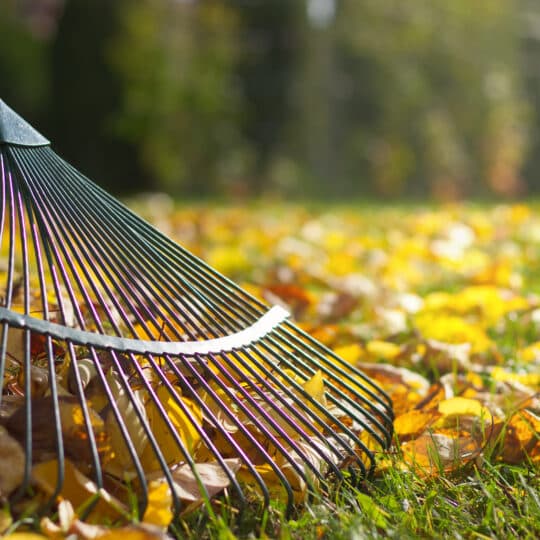What’s Better: Mulching or Bagging Leaves
The Benefits of Both

It’s the time of year when your lawn is blanketed in colorful, crunchy leaves. It used to be normal practice to rake and bag the debris. But now mulching is said to be a more beneficial alternative. So what’s best? Learn whether you should mulch or bag leaves in your lawn and the benefits of each.
Benefits of Mulching Leaves
Leaves are a part of nature. They naturally grow on trees, change color, and fall to the ground. But as many homeowners are learning, these leaves also make a great natural fertilizer for your lawn and garden. Here are some of the benefits to mulching leaves:
- Improves the soil by adding organic matter
- Acts as a fertilizer for strong plant growth
- A layer of leaf mulch prevents weed seeds from germinating in your lawn and garden
- The mulching process is typically faster and less strenuous than raking and bagging
However, large leaves need to be mulched—or diced up into smaller pieces—to decompose quicker before attracting pests and disease to your lawn.
How to Mulch Leaves
Mulching leaves can be as simple as mowing the lawn. If there’s only a thin layer of leaves, you can even leave the bag off your mower and let the cut up pieces fertilize the soil. For larger layers, simple put the bag on the mower and then distribute the collected leaf pieces around your yard or garden. You may need to make a few mower passes to chop up all the leaves.
Sometimes large quantities of heavy foliage falls in a short time frame. This is when a mulching mower comes in handy. Some regular mowers allow you to use mulching blades specially designed to cut more efficiently and help decrease the number of passes you need to make across your lawn. There are also dedicated leaf mulchers designed for shredding leaves, not cutting grass. Some models also act as leaf blowers and vacuums that shred and collect mulched leaves.
Try to mow before it rains. Like wet grass, wet leaves are harder to mow and makes the task more hazardous. You can also use the same mower height for mulching leaves, or use the highest for larger quantities. Even as grass growth slows, use your mower to mulch the leaves until they stop falling.
While there are many benefits to mulching leaves, there may be some cases when bagging is a better choice.
When to Bag Leaves
If your lawn is surrounded by deciduous trees, you probably have a lot of leaves in your lawn. If you’re just pushing around piles of leaves too big for your mower to mulch, consider bagging the excess.
Leaf mulch is also not the best fertilizer for young plants that haven’t established deep roots. Bagging the leaves is the better option than mulching new plants.
When you bag leaves, consider swapping the plastic bags for biodegradable ones. Check to see if your area offers yard waste pick-up days or if there’s a location to drop off leaf bags for recycling. At least this way the leaves won’t end up in a landfill.
Why You Shouldn’t Leave the Leaves
You may be asking, if leaves are so natural, can’t I just leave them in the lawn? You could—if you want to smother your grass and invite lawn disease. A layer of leaves blocks the light, water, and nutrients grass roots need to survive. Once this leaf layer gets wet, it also prohibits air circulation and provides an ideal environment for fungal growth. Plus, if a pile gets large enough, it could become a cozy spot for pests like mice to hunker down for the winter.
Left alone, fall leaves could lead to a bare lawn come spring. Between the lack of essentials and a plethora of fungus, your lawn may be spotted with bare patches and thinning grass. If this happens, Green Image Lawn Care would be happy to help bring the lushness back to your lawn. But you can help prevent future problems by deciding whether you want to mulch or bag leaves this season.